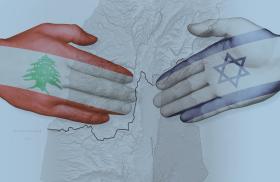Biological terrorism is very much a threat that we need to worry about. However, terrorists will face a number of formidable obstacles to conducting a successful biological attack. These include acquiring the agent, cultivating it and preparing it for dissemination, developing a means of dissemination, selecting and reconnoitering the target, and estimating the proper dosage required to achieve the desired effect. Accordingly, the terrorist must possess the technical skills required to obtain and cultivate the agent, understand how the agent will behave in the lab and in the field, and comprehend the mechanical dimensions of the dissemination process. There are few individuals that possess all these attributes and are motivated to conduct a terrorist act. For this reason, states--which have a larger human and material resource pool to draw on--are much more likely to be successful in this endeavor than a lone perpetrator or a small terrorist group.
It is a common misperception that carrying out a biological terror attack is easy. In fact, any number of missteps during the preparatory phase (should the agent be agitated while it ferments? should it be grown under aerobic or anaerobic conditions? should the strain be purified for best results?) could cause an attack to fail. There is also a potential for missteps during dissemination, due to ignorance of the proper dosage required to obtain a desired effect, the capabilities of a building's ventilation system--or wind speed and direction if an outdoor attack is planned--and misconceptions concerning a given agent's entry path to the body.
There are several myths regarding biological agents that need to be debunked:
1) Biological agents placed in water reservoirs can kill thousands of people. This would not be so easy to do. Most agents do not perform well in water. For example, cholera--which lives in water--is killed by sunlight, and even if it were to survive exposure to the sun, it might cling to the water pipes or be killed during the chlorination process. If the cholera survived to be ingested by a human, it might be killed by the natural acidity of the stomach. It is also important to note that the public water systems were developed to protect against just such hazards. Accordingly, water is tested regularly.
2) Anyone can produce a biological agent. This is not true. A terrorist must have detailed knowledge about the agent and the conditions in which it lives.
3) Biological agents are contagious and their release would cause an epidemic. In fact, most agents produce diseases that are not contagious. Plague is one example of an agent that is contagious, but because it is usually spread by animal-borne fleas, it is not a likely candidate for use by terrorists. Despite these difficulties, we must be prepared for such an eventuality in the future.
SETH CARUS
Though the United States government has been concerned about the possibility of chemical and biological terrorism since the 1950s, it still has only a limited capacity to deal with the threat. The Aum Shinrikyo attack on the Tokyo subway in 1995, however, served as a wake-up call. Many U.S. officials feared that if a similar attack had occurred here, the response would have been as ineffective as the Japanese response was. As a result, Congress has spearheaded efforts to address the threat of chemical or biological terrorism.
In the United States, local and state governments are responsible for providing emergency services in response to acts of terror, while the FBI and federal government are responsible for the law enforcement aspects of terrorism. Thus, in 1996, Congress passed the Defense Against Weapons of Mass Destruction Act to help local, state, and federal agencies better respond to acts of chemical and biological terror. As part of this legislation, the Department of Health and Human Services was allocated $6.5 million to establish the metropolitan medical strike team and U.S. Customs was given $9 million to invest in equipment for detecting chemical and biological agents at border crossings.
Most of the technical and medical expertise for dealing with chemical and biological weapons resides in the Department of Defense. Two operational units were recently created to deal with the threat: the Army has a Technical Escort Unit of 150 people trained to deal with chemical munitions, while the Marine Corps created a Chemical/Biological Incident Response Force of 350 people trained to rescue and decontaminate victims of chemical or biological attacks. There are a number of additional efforts under way to enhance U.S. capabilities in this area.
The United States is better equipped to deal with a chemical attack than a biological attack. Every emergency services organization, from the local to the federal level, has a hazardous materials unit. These units provide a pool of first responders able to deal (with some additional training) with chemical terrorism. Furthermore, there are a number of arsenals throughout the country where chemical weapons are stockpiled, and as a result, local emergency services units in these areas are trained to deal with lethal chemical agents. In addition, the Army has Reserve and National Guard units around the country with expertise in chemical weapons. By contrast, on the biological side there is virtually no local capability. The pool of trained personnel and the existing knowledge base concerning this subject is very limited. However, the money provided in recent legislation will address gaps in technology and in as short as one year from now forces should be equipped and trained to handle the threat of biological terrorism.
This Special Policy Forum Report was prepared by Lauren Rossman.
Policy #247

